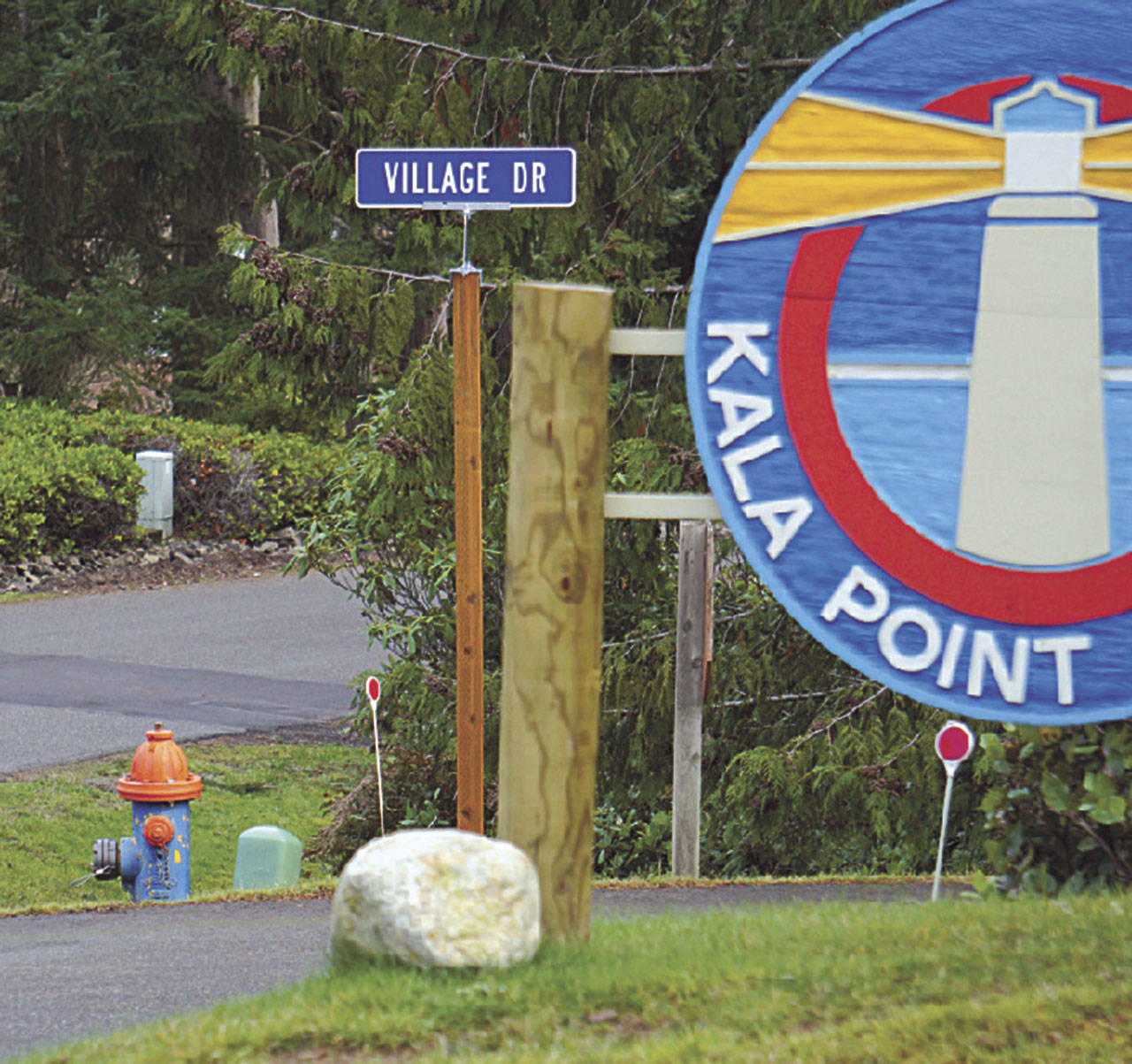PORT TOWNSEND — Most of the more than 550 fire hydrants of the Jefferson County Public Utility District are yellow, designating them as part of a public water system. In Kala Point, the hydrants are blue with orange caps.
But that’s about to change.
The blue and orange color scheme for Kala Point hydrants is because prior to the PUD taking over in 2012, Kala Point had a private water system, according to PUD Water Crew Lead Eric Storey.
Starting today, however, Kala Point hydrants will get their first officially designated color coding following a round of flow testing by the PUD, said Will O’Donnell, communications manager.
The flow tests determine how much water can flow through a hydrant. The amount of flow, measured in gallons per minute (GPM) determines the secondary color assigned to the hydrant.
Red means less than 500 GPM. Orange is 500-1,000 GPM. Green is between 1,000 and 1,500 GPM, and blue is over 1,500 GPM.
That’s why some yellow hydrants have red, blue, orange or green caps and/or rings.
Flow testing is a part of the standard maintenance that comes with managing a water system, according to O’Donnell.
The testing in Kala Point will be done by a contractor, Fire Solutions NW, who will provide the PUD a written report that indicates static pressure, flow rates, and pressure drops as well as, if needed, de-chlorinate the water or make recommendations for repair.
The contractor also will fit the hydrants with the appropriate colored collar to indicate their flow rates.
The color code tells firefighters how much water they can pull from the hydrant to put out a fire.
According to the Iowa State University’s Rate of Flow formula 500 GPM, for example, is needed to service a two-story house that is 50 feet wide by 50 feet long, O’Donnell said.
Regular flow testing — or the lack of it — also affects a fire department’s insurance rating, O’Donnell said. More frequent flow tests lead to better ratings, he said.
Another factor affecting ratings is the type of hose connection a hydrant has, O’Donnell said.
The traditional screw thread connection takes more time and effort and provides for a lower score, so the PUD has ordered and begun installing one-fourth turn quick connection adapters for all Kala Point hydrants, he said.
Storey said that 30 were installed in 2017, and the final 19 will be installed this year.
Kala Point is just the first stop on a systemwide series of hydrant tests and maintenance for the PUD, according to O’Donnell, and with each stop, data collected on the hydrants will be entered into the PUD’s GIS mapping system.
Casey Finedell, the PUD’s GIS specialist, has been cataloguing PUD assets on maps for the past two years. Whether it’s a hydrant or an electrical transformer, a PUD crew member can pull up not only the location of the asset, but all associated manufacturing and maintenance data, as well as notes left by other crew members, either in the office or onsite to perform a repair, O’Donnell said.

